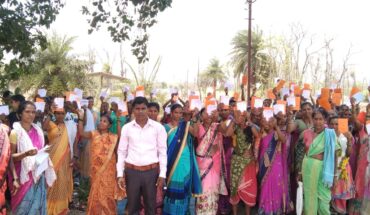On May 8, 2025, the Atal Pension Yojana (APY) marked an impressive milestone by celebrating its 10th anniversary. This transformative scheme was introduced a decade earlier, on May 9, 2015, by the Hon’ble Prime Minister Shri Narendra Modi, with the primary objective of providing economic and social security to individuals employed in the unorganized sector. The APY is designed to ensure that these workers receive a stable monthly pension ranging from ₹1,000 to ₹5,000 upon reaching the age of 60, thus aiming to bring financial stability during their retirement years. Over the years, the initiative has made remarkable strides toward enhancing the social fabric and economic conditions of its beneficiaries.
Eligibility for the Atal Pension Yojana is broad, targeting all Indian citizens aged between 18 to 40 years who do not fall under the taxable income category. This makes the scheme accessible to a significant segment of the population. To enrol in the program, applicants must have a savings account, possess a unique Aadhaar card, and maintain an active mobile phone number for communication and transaction purposes. Participants in the APY can select their desired pension amount—ranging from ₹1,000 to ₹5,000—which determines the investment required throughout their working years. Notably, contributions made to the scheme qualify for a tax exemption as per the applicable provisions of the Income Tax Act, providing an additional incentive for participants.
To become eligible for receiving a pension, individuals are required to commit to the program for a minimum duration of 20 years, or until they reach the retirement age of 60. For instance, a person beginning their investment journey at the age of 40 would need to contribute for 20 years, while someone starting at the age of 18 would be investing for a full 42 years to secure a stable pension.
The specific investment amount that one needs to contribute is dictated by the chosen pension level at retirement age. An 18-year-old who aims for a monthly pension of ₹5,000 must save ₹210 monthly until reaching 42 years of age. For those opting for lower pension amounts, the contributions would be ₹168 for ₹4,000, ₹126 for ₹3,000, ₹84 for ₹2,000, and ₹42 for ₹1,000. In contrast, a 40-year-old aiming for a minimum pension of ₹1,000 would need to contribute ₹291 each month. For those wishing to secure higher pension amounts, the monthly contributions escalate to ₹582 for ₹2,000, ₹873 for ₹3,000, ₹1,164 for ₹4,000, and ₹1,454 for ₹5,000. It’s crucial to highlight that the monthly payment structures may differ for individuals aged between 19 to 39, necessitating potential participants to seek detailed information online or directly through banking institutions for clarity on their specific circumstances.
The Atal Pension Yojana stands as a pivotal initiative, diligently working to safeguard the financial future of those engaged in the unorganized sector. By ensuring that participants have access to the essential resources necessary for a dignified and secure life in their later years, this program plays a critical role in enhancing the overall quality of life and promoting financial independence among its beneficiaries.
The Atal Pension Yojana (APY) is a government initiative designed to provide a secure pension for individuals in India’s unorganized sector. Under this scheme, participants can choose their preferred contribution frequency—monthly, quarterly, or half-yearly. By giving consent for automatic debit, individuals can have their chosen contribution amount automatically deducted from their bank account and deposited into their pension account, ensuring consistent savings without manual intervention.
In the unfortunate event of the subscriber’s passing, the scheme offers a safety net for the subscriber’s spouse. The spouse is guaranteed a pension, ensuring financial stability during difficult times. Additionally, if both the subscriber and their spouse were to die, any amount that has been deposited into the pension account until the subscriber turns 60 years old will be returned to the designated nominee, providing a financial cushion for loved ones.
Moreover, if the subscriber dies before reaching the age of 60, the spouse has the option to either continue contributing to the Atal Pension Yojana account or withdraw the total accumulated funds. This choice allows the spouse to decide between receiving a pension that mirrors what the subscriber would have received at retirement or opting for an immediate one-time pay-out of the total contributions made.
Opening an Atal Pension Yojana account has been streamlined for convenience. Customers of the State Bank of India can easily set up their account online through internet banking. Instead of visiting a bank branch, users can log into their internet banking portal, navigate to the e-service section, and select the Social Security Scheme link. Here, they will find the option for the Atal Pension Yojana alongside other schemes such as PMJJBY (Pradhan Mantri Jeevan Jyoti Bima Yojana) and PMSBY (Pradhan Mantri Suraksha Bima Yojana). After clicking on APY, users fill in essential information such as account details, personal identification, and age, and then select their desired monthly pension amount. The required monthly instalment is subsequently calculated based on the individual’s age, making it tailored to their circumstances.
Participation in the Atal Pension Yojana requires individuals to have a valid savings account. The monthly instalment due date is established based on when the first contribution is made. It is also imperative for participants to designate a nominee for the account. Notably, only one APY account can be opened per individual. Should there be insufficient funds in the account to cover a scheduled contribution, a penalty will be enforced, emphasizing the importance of adequate financial management.
Since the program’s inception in May 2015 through to April 2025, it has garnered over 7.65 crore subscribers, underscoring its critical role in enhancing economic and social security for countless workers in the unorganized sector as they approach old age. In the financial year 2024-25 alone, the scheme welcomed 1.17 crore new participants, building on the momentum of more than 1 crore enrolments over the prior two years. These increasing numbers reflect a growing confidence in the scheme, amplifying its potential to provide social and economic safety nets across the nation.
The demographic distribution of participants has revealed encouraging trends, with approximately 55% of those enrolled being women. This statistic demonstrates not only a rising awareness of financial planning among women but also highlights the empowerment potential of the Atal Pension Yojana. Particularly noteworthy is Uttar Pradesh, which has reported remarkable participation, boasting over 1.25 crore members. In fact, the state’s enrolment exceeded its target for the financial year by an impressive 104.22%. However, this success is not uniform across all regions. Some states, such as Punjab, have reported a concerning trend: approximately 20.4% of participants have ceased their contributions due to challenging financial circumstances.
Overall, the Atal Pension Yojana stands as a vital mechanism for providing economic and social security in retirement for millions in the unorganized sector. It plays a significant role in promoting women’s empowerment and financial inclusion. While there are operational challenges that remain to be addressed, the increasing interest and participation in this scheme—particularly among those in rural, semi-urban, and urban settings—underscore its promise of financial security and the governmental support that enhances its appeal.
Satish Singh is a Senior Columnist based in Ahmedabad, and Views expressed are his personal opinions.






